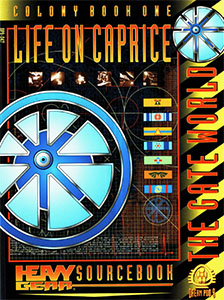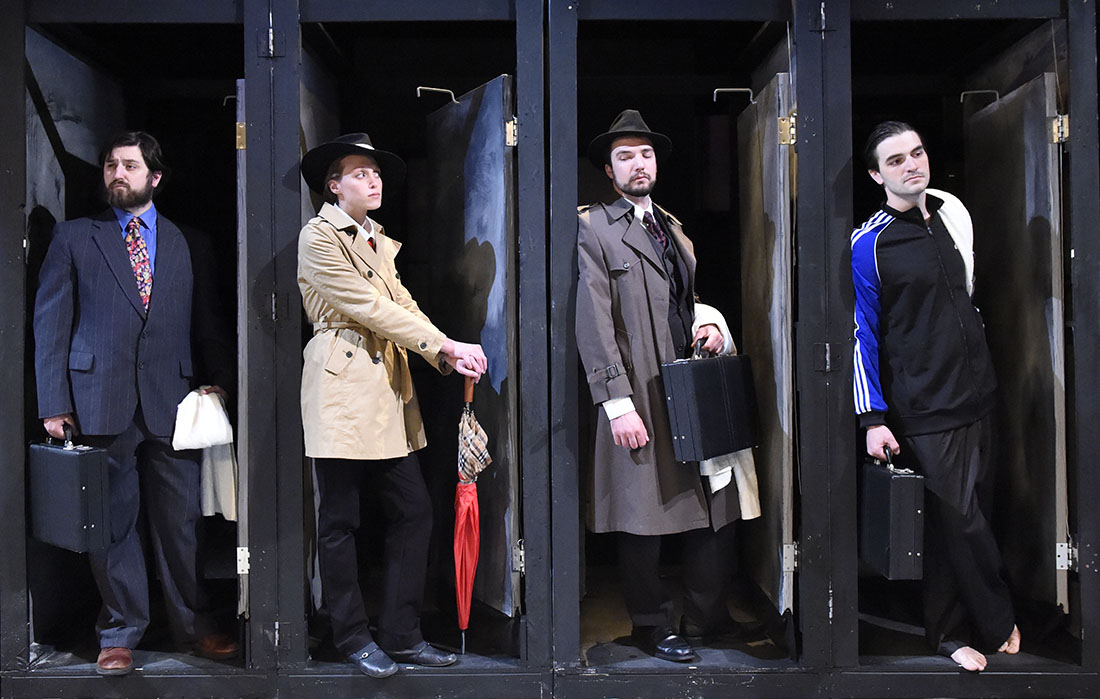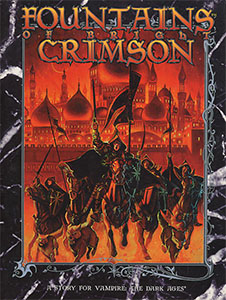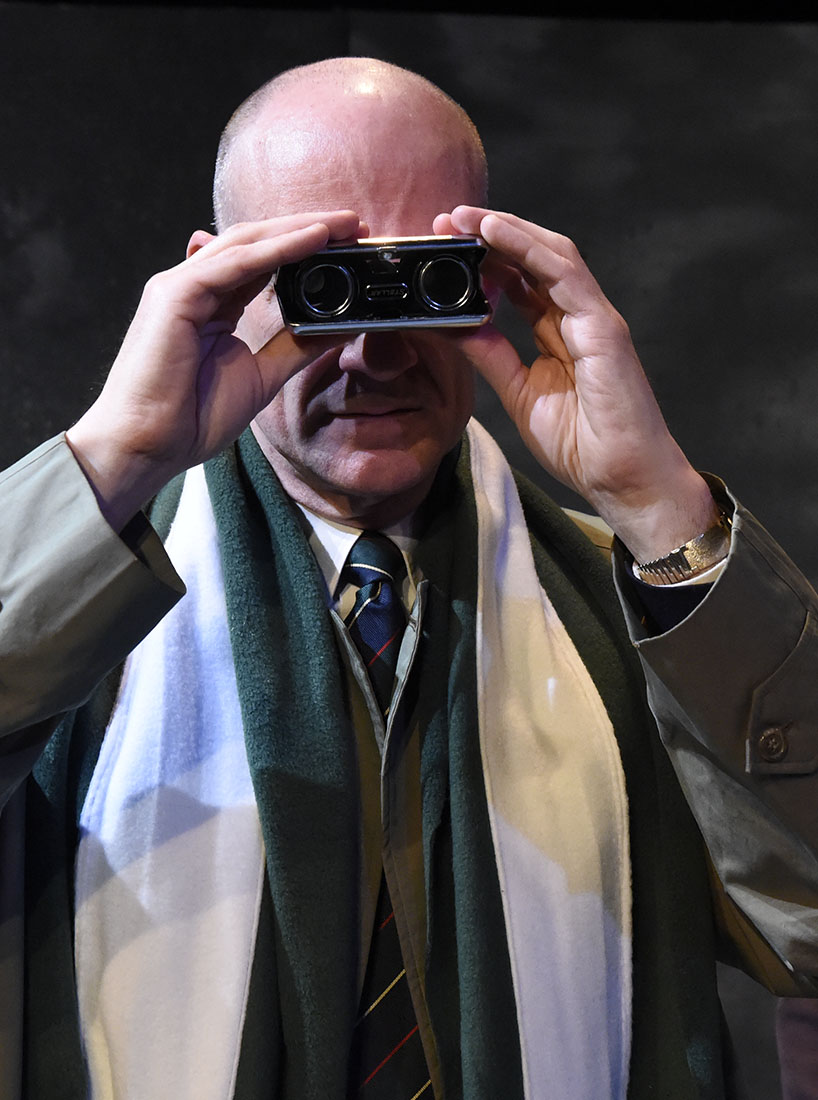Tagline: Life on Caprice is an incredibly strong book and absolutely essential to anyone interested in exploring a new world or keeping up on the cutting edge developments of the Heavy Gear universe. But behind its success there is a flaw — a flaw which must be corrected.
 In 1995 Dream Pod 9 released the first edition of Heavy Gear. The game was set on the world of Terra Nova, a colony orbiting a distant star, in the cycle TN 1932 (6132 A.D.). The game consisted of two core books: The rulebook (containing both a roleplaying and a tactical system) and Life on Terra Nova (which described a setting of epic scope in copious and useful detail).
In 1995 Dream Pod 9 released the first edition of Heavy Gear. The game was set on the world of Terra Nova, a colony orbiting a distant star, in the cycle TN 1932 (6132 A.D.). The game consisted of two core books: The rulebook (containing both a roleplaying and a tactical system) and Life on Terra Nova (which described a setting of epic scope in copious and useful detail).
Over the next five years both of these books would see a much-improved second edition, and three additional volumes were also added to the core of the game: Crisis of Faith, Blood on the Wind, and Return to Cat’s Eye. Also known as “storyline books” these secondary core books would advance our knowledge of Terra Nova by nine cycles – taking us to TN 1941. Over the course of that time Terra Nova was wracked by an Interpolar War, and then suddenly faced with the knowledge that the fascist powers of Mother Earth were returning once more to conquer their world.
Confronted by this new threat, Terra Nova decided to respond in kind. At the end of Return to Cat’s Eye we learn that Terra Nova has launched a covert campaign against Caprice. Also known as the “Gate World”, Caprice has been subjugated by Terran forces, and represents the link between Earth and her “lost” colonies.
All of which opens the door to Life on Caprice: The most recent secondary core book for Heavy Gear and acting as the basic supplement describing the world of Caprice.
Life on Caprice, essentially, is the exact same type of book as Life on Terra Nova. This makes for a rather unique product – one which can be used as a supplement for existing Heavy Gear campaigns, or one which can be used as the basis for a whole campaign in its own right. Indeed, Life on Caprice comes so tantalizingly close to functioning as a completely separate entity from Life on Terra Nova that it becomes disappointing that the possibility was never realized.
First, let us understand that Life on Caprice is an incredibly strong product: Describing an alien world with startling precision and breadth. For those unfamiliar with the Heavy Gear universe, Caprice is a largely barren world – except for a deep trench gouged in the surface long ago where atmospheric pressure is high enough to support human life unaided. As a result, almost the entire population of the planet lives in Gomorrah – the city which chokes the trench from one end to the other with a population of 311 million. Colonized and controlled by corporations, the Capricians wage a silent battle against their Terran conquerors, who are using Caprice as a staging area for their invasions against the other colony worlds (including Terra Nova). While crafting an entire planet, the authors have not failed to provide all sorts of “gritty” detail that is immediately practical for the GM.
As I read through the book I literally began to seethe with the possibilities of adventure which are not only promised, but delivered. The aptest metaphor which occurred to me was that of a monument: Large and symbolic; yet also something real and tangible.
So let there be no doubt: Life on Caprice is a strong success that is an admirable addition to a wonderful game line.
Where it fails, however, is in the details. It is here, between the realm of the successes it achieves and the successes it should have achieved that Life on Caprice finds its strengths being chipped and whittled away.
For simplicity, let us compare Life on Caprice to Life on Terra Nova. Life on Terra Nova gives coverage to every single city-state and important settlement on the face of Terra Nova – a grand total of 80 different communities. The closest analogy to these on Caprice are the “Hubs” of Gomorrah – each of which is large enough to be a city in its own right. There are 72 of these on Caprice, but Life on Caprice only describes 11 of them. Thus, where Terra Nova was given a dynamic breadth which made the world seem to come to life even as you read through the book, all the facets of Caprician life become oddly focused through the one seventh of the planet’s Hubs which are actually described. When a character’s haunts are mentioned, they are always in these hubs. When a location is described, it is always within these hubs. When an important historical event took place, it is always within these hubs.
In the historical section in Life on Terra Nova we are told of Amanda Miyagama – important because she was the key player in establishing the Caprician Corporate Executive (CCE), a body which continues to function as Caprice’s government to this day. Why, then, is she not even mentioned in Life on Caprice?
In Life on Terra Nova dozens of influential people are described to us. In Life on Caprice we are given only 7 NPCs. Only four corporations. Only three Liberati clans. Again and again and again Life on Caprice finds itself damned not because it fails to give, but because it fails to give as much as we’ve come to expect from Dream Pod 9. Terra Nova seemed to have a legitimate life of its own, but that sense of life is lost in the all-too-narrow focus of Life on Caprice. Lang Regina is described in Life on Terra Nova because she is an important part of Terra Novan life; the fact that she ends up playing a major part in the peace effort following the Interpolar War seems to be simply a result of part in Terra Novan life that she plays. Qaid Henault, Captain of the Princess, on the other hand, is described in Life on Caprice because he plays a major role in the Black Talon program (which is, in turn, a major part of the Heavy Gear metaplot). Instead of feeling like a world which just happens to be involved in an interesting period in history, Caprice is described as a place whose primary function is be involved in the evolving metaplot.
I recently wrote (and feel compelled to repeat) that being truly excellent is a double-edged sword: On the one hand, of course, you’re excellent – and that comes with a lot of perks. On the other hand, though, you have set yourself a very high standard indeed – and a failure in the details suddenly becomes a notable offense.
And it is in the details that Life on Caprice fails; and it is in the details that Life on Caprice disappoints. On the larger scale I rejoice, because Life on Caprice is a success there. On this smaller, but no less important scale, though, I am depressed – because Life on Caprice could’ve, and should’ve, been so much more.
Consider this a message to Dream Pod 9: The 96 page books have failed. In producing books of this length you have been forced to sacrifice the fine hair’s breadth difference between being merely good and truly excellent. The true problem, though, lies in the next level: Left unchecked these problems will begin to cascade across the product line – information that was left uncovered in Life on Caprice will now have to be picked up in supplements further down the line. In turn, those supplements will be forced to sacrifice information in turn. Slowly, but surely, the shorter formats will increasingly weaken all of Dream Pod 9’s books.
By all means: Buy Life on Caprice. It is an incredibly strong book, and absolutely essential to anyone interested in exploring a new world or keeping up on the cutting edge developments of the Heavy Gear universe. But behind its success there is a flaw – a flaw which must be corrected.
Thanks are extended to M. Ramirez, Jeremy T. Fox, and Derek Guder for feedback during the process of writing this review.
Style: 4
Substance: 4
Author: Lucien Soulban (with Stuart Elle, Chris Hartford, Auden Reiter, and Marc-Alexandre Vezina)
Company/Publisher: Dream Pod 9
Cost: $18.95
Page Count: 96
ISBN: 1-896776-66-3
Originally Posted: 2000/07/07
The weak Canadian dollar in the late ’90s did really serious damage to both the Heavy Gear and Jovian Chronicles product lines. They had originally featured 148 and 160 page sourcebooks. When these were reduced to 96 pages and, later, 80 pages (literally chopping the books in half) the quality of the material necessarily suffered in what quickly became a cascading catastrophe (with the weaknesses of one sourcebook spilling over onto the next).
For an explanation of where these reviews came from and why you can no longer find them at RPGNet, click here.



 One of the two main plots in The Merchant of Venice, of course, revolves around the pound of flesh which Anthonio forfeits to Shylock when he fails to repay his bond. Although an Italian collection of stories entitled Il Pecorone is usually cited as the primary source of this plot (insofar as it most closely resembles the story in Shakespeare’s play), the truth is that there were dozens of variations of this story to be found and it’s likely that Shakespeare was familiar (or at least acquainted) with several of them. (There are even versions in which it is the Christian who is attempting to claim a pound of flesh from the Jew.)
One of the two main plots in The Merchant of Venice, of course, revolves around the pound of flesh which Anthonio forfeits to Shylock when he fails to repay his bond. Although an Italian collection of stories entitled Il Pecorone is usually cited as the primary source of this plot (insofar as it most closely resembles the story in Shakespeare’s play), the truth is that there were dozens of variations of this story to be found and it’s likely that Shakespeare was familiar (or at least acquainted) with several of them. (There are even versions in which it is the Christian who is attempting to claim a pound of flesh from the Jew.)












